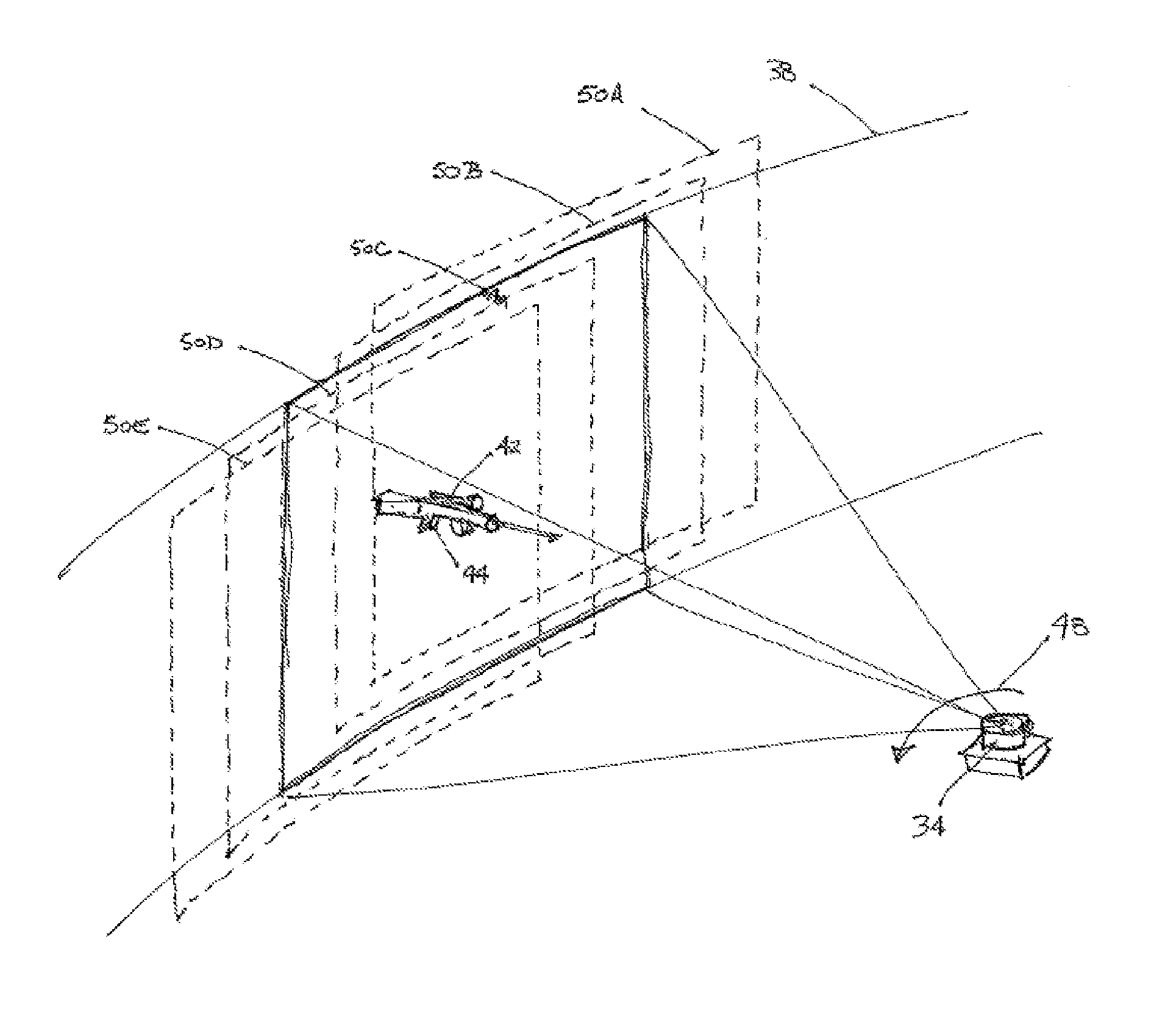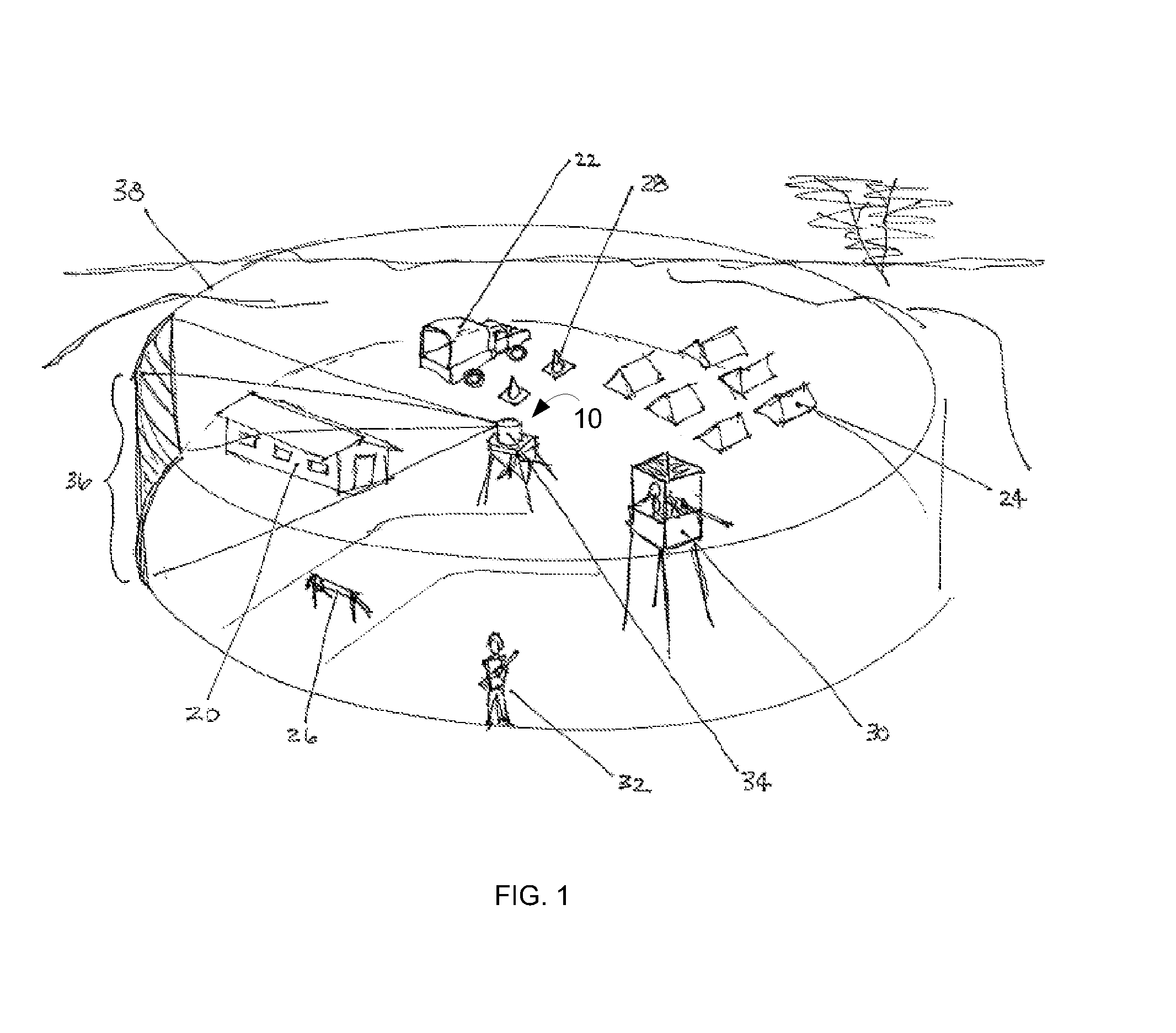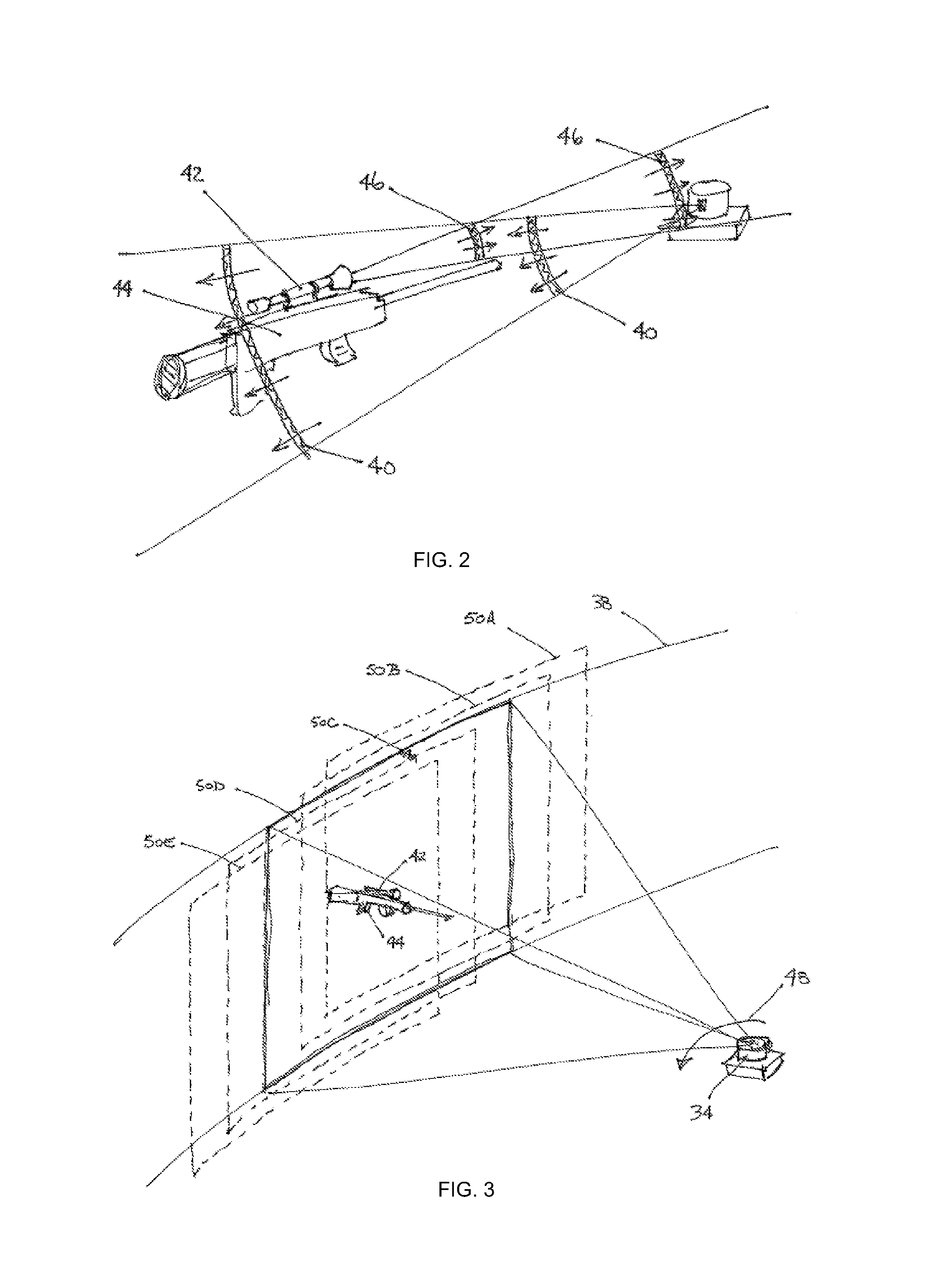System and method for optics detection
a technology of optical systems and detection methods, applied in direction finders, instruments, using reradiation, etc., can solve the problems of long-time combat situation soldiers facing the danger of snipers firing from concealed locations, difficult to find snipers, so as to reduce ambient optical noise, improve system ability, and reduce ambient optical noise
- Summary
- Abstract
- Description
- Claims
- Application Information
AI Technical Summary
Benefits of technology
Problems solved by technology
Method used
Image
Examples
Embodiment Construction
[0026]To overcome at least some of the disadvantages of existing sniper detection systems listed above, there is a need for a system that scans the entire perimeter of an area in a very short amount of time, scans continuously, and identifies potential threats with a high degree of confidence. The optics detection system of the present application overcomes at least some of these limitations and provides an elevated level of protection.
[0027]Providing protection for people against hostile attack is a difficult and complex task. Whether the people at risk are military personnel in a war zone or civilians, such as the President of the United States, the first line of defense is to identify anyone who is observing the subject group from a distance. The possibility that a sniper may fire accurately from a distance of up to 1200 meters and take aim within a matter of seconds makes it desirable to keep the surrounding area under constant surveillance.
[0028]FIG. 1 illustrates an optics det...
PUM
 Login to View More
Login to View More Abstract
Description
Claims
Application Information
 Login to View More
Login to View More - R&D
- Intellectual Property
- Life Sciences
- Materials
- Tech Scout
- Unparalleled Data Quality
- Higher Quality Content
- 60% Fewer Hallucinations
Browse by: Latest US Patents, China's latest patents, Technical Efficacy Thesaurus, Application Domain, Technology Topic, Popular Technical Reports.
© 2025 PatSnap. All rights reserved.Legal|Privacy policy|Modern Slavery Act Transparency Statement|Sitemap|About US| Contact US: help@patsnap.com



